Wait, what? A Morris Minor on a Japanese car-oriented blog? That’s right, but this Celestial Minor is very special as it carries a secret in its underpinnings and these AE86 pizzacutter wheels should give you a hint in the correct direction.
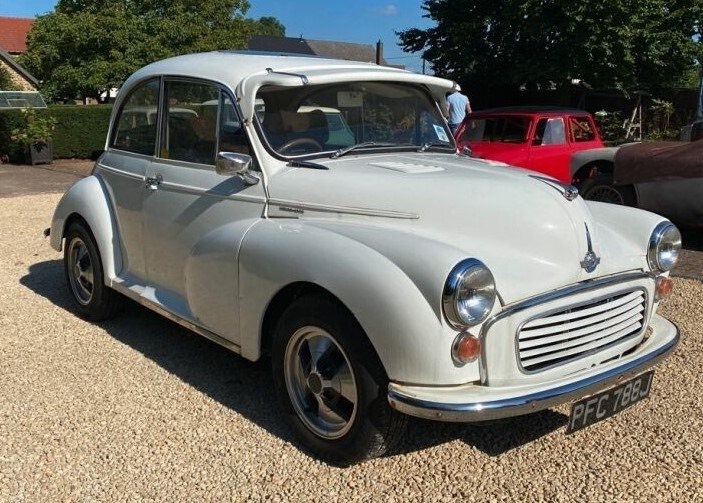
The Morris Minor was a car that was manufactured between 1948 and 1971. If you’re less familiar with the history of the British car industry, Morris merged with Austin in 1952 and became the British Motor Company, also known as BMC. In 1968 BMC merged with Leyland Motors (Triumph and Rover) and became British Leyland. Why is this important? Well, because the Minor in question was produced under British Leyland in 1970, this could have been one of the very last Minors produced.
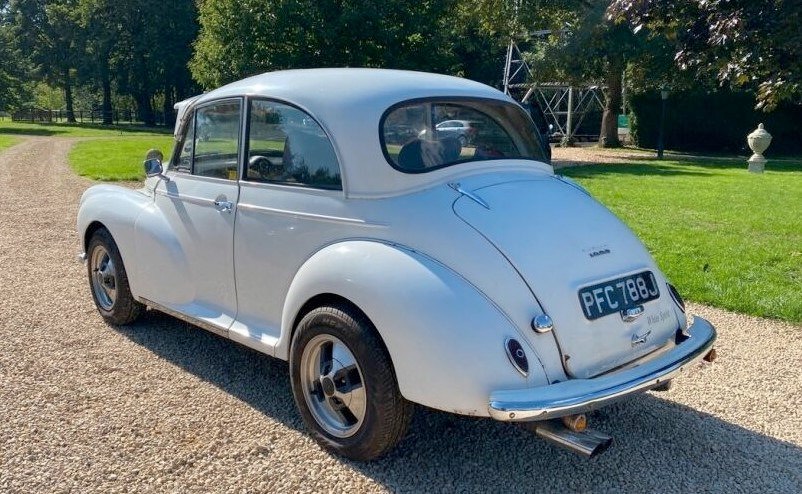
The Morris Minor sold in 1970 would still have retained the A-series engine with an engine displacement of 1,098cc. This would in turn output an incredible 48 hp (36 kW) in power and 60 lb/ft (81 N·m) in torque. This probably wasn’t enough for one of the previous owners and this owner decided to replace the engine and drivetrain with something more peppy! So what did he/she replace it with then?
The oil cap on this engine reveals the origins of the engine: Toyota! There are a couple striking details that can help us uncover which Toyota engine it is! First of all, the carburettor is on the left-hand side of the car and so is the exhaust. This means the engine is most likely a K-series or R-series engine. A K-series engine in stock form wouldn’t output much more than a well-tuned British Leyland A-series engine, so we can discard that one.
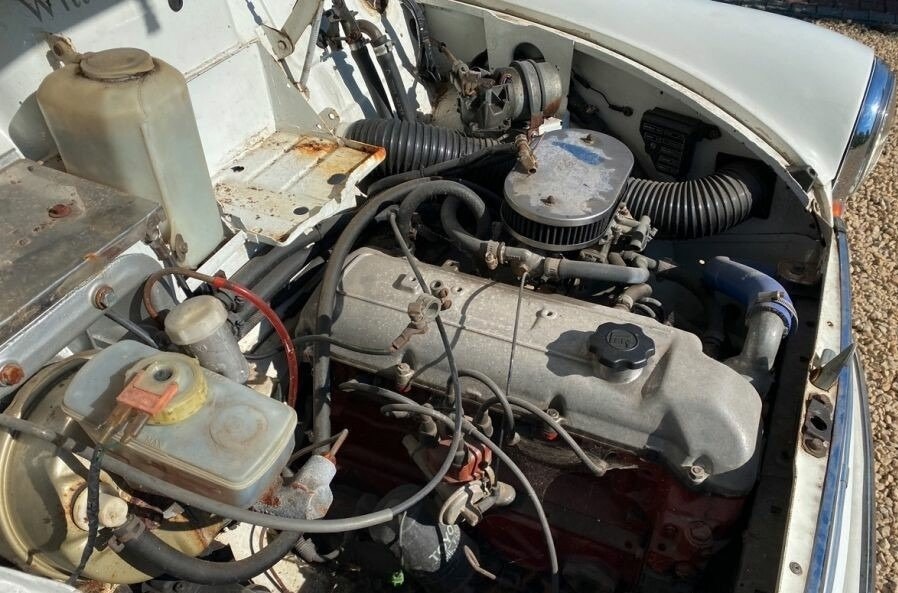
Another clue is the valve cover: it’s not an upright cover, but it’s rounded off at the front. This means it looks very different from most Toyota R-engines and we can narrow it down to the 18R engine. The 18R was a ubiquitous engine during the mid-1970s and was delivered in many Toyota models including the HiLux and the Cressida. This also means the engine featured different tunes, and different gearboxes and offered a wide range of engine output. So the big question then is which car was used as the donor for this engine?
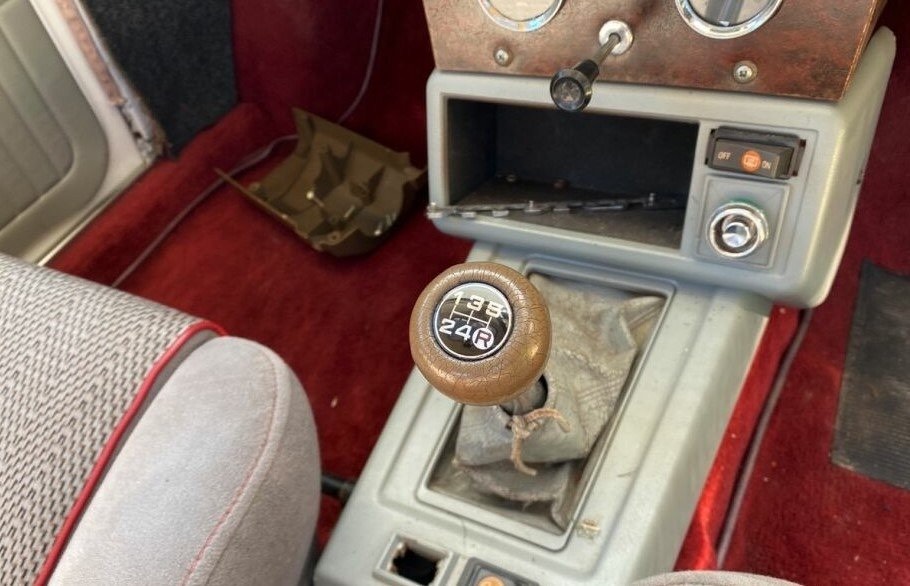
We can find clues inside the cabin: it’s got a five-speed gearbox and the shifter trim has been transplanted onto the Minor. Not only the shifter trim has been transplanted, but also the radio bezel and this is something we can absolutely match to a car: the second-generation Toyota Celica, also known as the Celica A40!
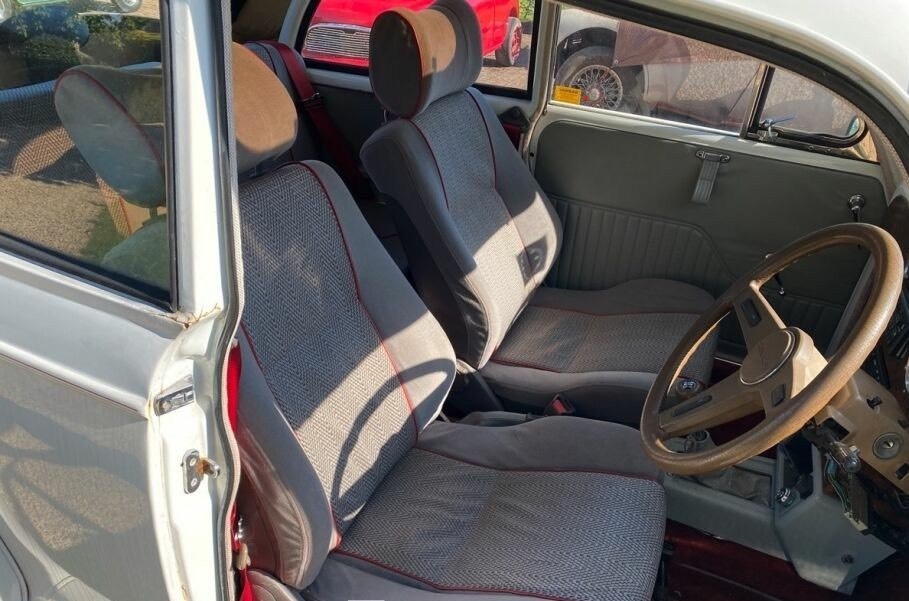
If we look at the rest of the interior we can clearly see a Celica A40 generation steering wheel. Other modifications to this car are the seats. These seats haven’t been swapped from the Celica and are of unknown origin.
The Celica RA40 featured the 18R-C engine, offered a five-speed gearbox and had an output of a healthy 97 hp (72 kW) in power and 143 N⋅m (105 lb⋅ft) of torque. That’s well over double the original BL A-series engine! That’s as if you manage to slice the weight of your car in half! With the Minor weighing about 775 kilograms, this must be one-spirited car to drive!
Conclusion
Personally, I love British-built cars from the 1950s until the late 1960s. This was the heyday of the British motorcar before they were overtaken by the Japanese. Mechanically, these cars were much simpler yet still returned good performance. Innovation thrived during this period before succumbing to the British Leyland mindset of reusing whatever they could and the penny-pinching cost-saving measures to maximize profit. If there was any profit, to begin with.
The reason the Japanese cars took the British Isles by storm was because they were reliable. I’m not saying all British cars from this era were unreliable, but they had a reputation for being unreliable. Imagine what it’s like to turn the key and your car refuses to start. Then imagine what it’s like to have to troubleshoot every day why your car isn’t starting. Now imagine you bought a Japanese car that just starts every time and every day. It’s no wonder the British car dealerships were simply ignored and prospective buyers flocked to the Japanese dealerships.
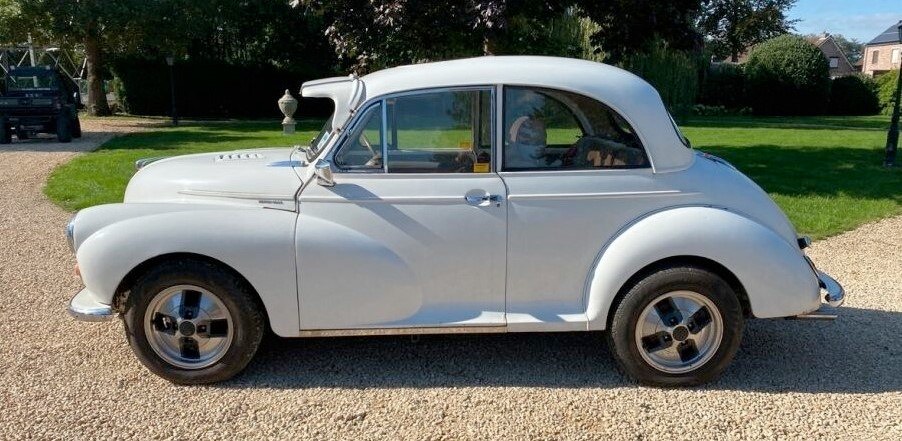
So now we get to today’s Morris Minor. I found it on Catawiki for sale about a year ago and I was really tempted to buy it. Imagine the perfect Morris Minor that starts every time and every day. A Morris Minor with a five speed gearbox and much better fuel economy. This Minor really makes sense and I love it! Unfortunately I had other priorities and this is one I had skip and let someone else enjoy it.
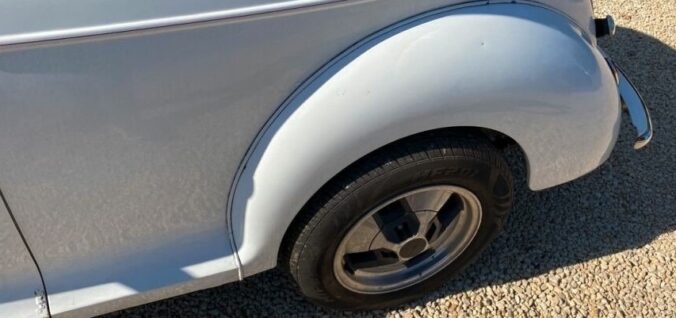
Leave a Reply